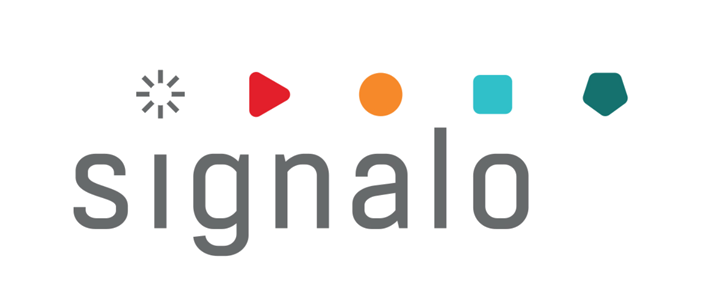KPI (s) help businesses track their progress and make informed decisions
- Key Performance Indicators, or KPIs, are quantifiable metrics that organizations use to evaluate their performance against specific goals and objectives. These indicators serve as valuable tools for measuring the success of various business activities and processes.
- KPIs can vary depending on the nature of the organization and its objectives. They can be financial, such as revenue growth or profitability ratios, or operational, such as the number of customer complaints or employee productivity. The key characteristic of KPIs is that they provide actionable data that can be used to make informed decisions and drive performance improvement.
Importance of KPI in measuring performance and driving improvement
- KPIs play a significant role in measuring an organization’s performance and identifying areas that need improvement. By setting clear and measurable targets, businesses can track their progress and ensure that they are moving in the right direction.
- KPIs help organizations define what success looks like and provide benchmarks to compare their performance against industry standards or competitors. This enables businesses to identify strengths and weaknesses, allowing them to focus on areas that require attention and improvement.
- Moreover, KPIs can also act as motivational tools for employees. When individuals have clear performance targets and can see their progress, it increases their sense of achievement and fosters a culture of continuous improvement within the organization.
- Furthermore, KPIs enable organizations to align their efforts and resources towards achieving their strategic goals. By monitoring performance through the lens of KPIs, businesses can prioritize activities that contribute the most to their overall success.
Definition of KPI
What are KPIs and how are they defined?
KPIs, which stands for Key Performance Indicators, are measurable values that help organizations assess their progress towards achieving specific goals and objectives. These indicators are used to evaluate performance and provide insights into whether an organization is on track or needs to adjust improve its performance. KPIs are often expressed as percentages, ratios, or numbers, making them easily quantifiable and comparable.
Different types of KPI
- There are various types of KPIs that organizations use to measure different aspects of their performance. Financial KPIs focus on financial success and include indicators such as revenue growth, profitability, return on investment (ROI), and cash flow.
- Operational KPIs assess the efficiency and effectiveness of internal processes, such as production cycle time, inventory levels, and employee productivity. Customer-related KPIs measure customer satisfaction, loyalty, and engagement levels, including indicators like Net Promoter Score (NPS), customer retention rate, and customer lifetime value.
- Other types of KPIs include employee-related KPIs, which gauge workforce performance and engagement, environmental KPIs that assess sustainability efforts, and sales-related KPIs that track sales targets, conversion rates, and average order value.
Key characteristics of effective KPIs
Effective KPIs possess certain characteristics that make them valuable tools for organizational performance evaluation.
Clear, concise, and easy to understand by all stakeholders
This ensures that everyone in the organization has a clear understanding of what is being measured and why it is important.
Measurable
meaning that they can be quantified and tracked over time. This allows for objective assessment and comparison of performance across different periods or departments.
Relevant and aligned with the organization’s goals and objectives
They should reflect the critical success factors that drive the organization’s performance and provide meaningful and actionable insights.
Timely
meaning that they are measured and evaluated within a specific timeframe. This allows organizations to identify trends, make necessary adjustments, and track progress towards achieving their goals.
Importance of aligning KPIs with organizational goals and objectives
Aligning KPIs with organizational goals and objectives is crucial for effective performance management. When KPIs are aligned with strategic objectives, they serve as a roadmap for success and guide decision-making processes. By measuring the right indicators, organizations can identify areas of improvement, prioritize resources, and address any performance gaps in a targeted manner.
Additionally, aligning KPIs with organizational goals fosters a culture of accountability and transparency. It enables employees at all levels to understand how their individual efforts contribute to the organization’s overall success. Clear alignment also facilitates communication and collaboration among different departments, ensuring that everyone is working towards a shared vision.
Application of KPIs
Overview of various industries utilizing KPIs
KPIs, or Key Performance Indicators, are widely used in various industries across the United States to measure and track performance and progress
Finance industry
In the finance industry, organizations use KPIs such as return on investment (ROI), profit margin, and revenue growth rate to assess their financial performance. These indicators provide insights into the profitability, efficiency, and overall financial health of a company.
Marketing
Similarly, marketing teams utilize KPIs like customer acquisition cost (CAC), customer lifetime value (CLTV), and conversion rate to gauge the effectiveness of their marketing campaigns. These metrics help marketers identify successful strategies and optimize their efforts to maximize ROI.
Healthcare
The healthcare sector also extensively relies on KPIs to monitor patient outcomes, streamline processes, and enhance quality of care. Metrics such as patient satisfaction scores, readmission rates, and wait times are used to evaluate the performance of healthcare providers and identify areas for improvement.
IT
In the technology industry, KPIs play a crucial role in assessing the performance of software development projects. Metrics like time to market, defect density, and customer satisfaction ratings help project managers track progress, identify bottlenecks, and ensure timely delivery of high-quality products.
Benefits of using KPIs to measure performance and progress
- The utilization of KPIs offers numerous benefits to organizations in effectively measuring performance and progress. Firstly, KPIs provide a clear and quantifiable benchmark against which performance can be evaluated. By setting specific targets and monitoring progress towards them, companies can identify areas of success and areas that require improvement.
- Furthermore, KPIs enable organizations to align their goals and objectives with their strategic vision. By selecting appropriate KPIs, businesses can track the metrics that directly impact their overall success. This alignment helps in prioritizing efforts and resources towards achieving desired outcomes.
- KPIs also facilitate data-driven decision-making. Instead of relying on gut feelings or intuition, organizations can base their decisions on tangible and objective data gathered through KPI tracking. This leads to more informed and effective decision-making, ultimately resulting in improved performance and profitability.
Challenges and considerations in selecting appropriate KPIs
While KPIs offer numerous advantages, selecting the right KPIs for an organization is not a straightforward task. It requires careful consideration of industry-specific factors, organizational goals, and available resources.
- One of the challenges in selecting appropriate KPIs is the abundance of potential metrics to choose from. With so many indicators available, organizations must prioritize and select those that align most closely with their strategic objectives.
- Additionally, KPIs should be measurable, meaningful, and actionable. It is crucial that organizations can track and analyze the chosen indicators effectively to gain valuable insights and make necessary improvements.
- Another consideration is the timeliness and relevance of the data used to measure KPIs. Outdated or irrelevant data can lead to inaccurate evaluations and misguided decision-making. Therefore, it is essential to ensure that the data used for KPI tracking is up-to-date, reliable, and relevant to the performance being assessed.
Examples of KPIs in Different Areas
These indicators help managers and decision-makers assess the performance and progress towards achieving specific goals. While KPIs can vary across industries and regions, this section will explore examples of KPIs commonly used in different areas, specifically focusing on those used in the United States.
Financial KPIs
Financial KPIs are commonly used to evaluate the financial well-being and performance of a company. Some examples of financial KPIs used in the US include revenue growth and profit margin. Revenue growth measures the increase in a company’s sales over a specific period, which indicates the effectiveness of its sales and marketing efforts. Profit margin, on the other hand, calculates the percentage of profit a company generates from its revenue, providing insights into its operational efficiency and ability to manage costs effectively.
Operational KPIs
Operational KPIs focus on measuring the efficiency and effectiveness of a company’s operations. In the US, examples of operational KPIs include production efficiency and cycle time. Production efficiency measures the ratio of actual output to the planned output, demonstrating how well resources are utilized to produce goods or services. Cycle time, on the other hand, measures the time it takes for a process or task to be completed from start to finish, helping identify bottlenecks and areas for improvement in the production or service delivery processes.
Customer-related KPIs
Customer-related KPIs assess the satisfaction and loyalty of customers towards a company’s products or services. In the US, common customer-related KPIs include customer satisfaction and retention rate. Customer satisfaction measures the level of satisfaction customers have with a company’s products or services, indicating the quality of their experience and the likelihood of repeat business. Retention rate, on the other hand, measures the percentage of customers that continue to do business with a company over a specific period, reflecting its ability to retain customers and build long-term relationships.
Employee performance KPIs
Employee performance KPIs evaluate the productivity and effectiveness of employees within an organization. Examples of employee performance KPIs used in the US include productivity and absenteeism rate. Productivity measures the output or work completed by an employee in a given time frame, demonstrating their efficiency and contribution to the company’s overall performance. Absenteeism rate, on the other hand, measures the percentage of time employees are absent from work, indicating their engagement and commitment to the organization.
Utilizing KPIs in Manufacturing Companies
KPIs are essential for monitoring the progress and success of manufacturing processes. By aligning these indicators with organizational goals, management can effectively measure and evaluate the performance of different departments and individuals within the company. This allows for the identification of areas that require improvement and the implementation of necessary changes to optimize productivity and maintain high-quality standards.
Specific KPIs used in manufacturing industry (e.g., OEE, first-pass yield)
- The manufacturing industry utilizes a wide range of KPIs to measure and track performance. One commonly used indicator is Overall Equipment Efficiency (OEE), which assesses the effectiveness of machinery and equipment within a production line. OEE takes into account factors such as machine availability, performance efficiency, and quality output, providing manufacturers with a comprehensive understanding of machines’ utilization and potential bottlenecks in production.
- Another crucial KPI in manufacturing is first-pass yield, which measures the percentage of products manufactured correctly without any rework or repair. This indicator directly reflects the efficiency of the manufacturing process and the accuracy of production operations. Monitoring the first-pass yield enables manufacturers to identify any issues in the production line promptly, reducing waste and ensuring the delivery of high-quality products to customers.
Case studies highlighting successful implementation of KPIs in manufacturing
- Numerous case studies demonstrate the successful implementation of KPIs in manufacturing companies. One such example is our client, a leading automotive parts manufacturer. By implementing OEE as a KPI, was able to identify an underperforming machine that was causing significant production delays. Through targeted maintenance and process improvement, they were able to increase the OEE of the machine by 20%, resulting in a significant boost in productivity.
- Another case study involves a consumer electronics manufacturer. By closely monitoring the first-pass yield as a KPI, was able to detect a recurring issue in their assembly line, leading to defective products. Implementing corrective measures and providing additional training to employees resulted in a remarkable improvement in the first-pass yield, ultimately reducing waste and improving customer satisfaction.
Conclusion
In this article, we explored the meaning of KPIs and their importance in assessing performance. KPIs, or Key Performance Indicators, are measurable values that help organizations track progress towards their goals and objectives. By setting specific KPIs, organizations can effectively measure their performance and make informed decisions based on the results.
- For organizations aiming to implement effective KPIs, there are several key takeaways to consider. Firstly, it is important to align KPIs with organizational goals and objectives. This ensures that the metrics being measured are directly linked to the overall success of the organization.
- Secondly, KPIs should be specific, measurable, achievable, relevant, and time-bound (SMART). This framework helps organizations define clear and attainable targets that can be tracked and evaluated over a specified period.
Future trends and developments in KPI measurement and analysis
Looking ahead, there are several future trends and developments in KPI measurement and analysis. With advancements in technology, organizations can now leverage data analytics tools to collect, analyze, and interpret KPI data more efficiently. This enables faster decision-making and provides a comprehensive understanding of performance trends.
Moreover, there is an increasing focus on qualitative KPIs, such as customer satisfaction and employee engagement, alongside traditional quantitative metrics. This holistic approach ensures a more balanced assessment of an organization’s performance.
How to create your own KPIs?
Download a Short Guide
Download our guide and learn how to establish your own key performance indicators (KPIs) for your product that align with your goals and strategies. This will allow you to precisely monitor results and evaluate the effectiveness of your actions. Downloading the guide is a step towards optimizing and increasing the efficiency of your business.


Leveraging IT Systems for Monitoring KPIs
Analyzing Key Machine Parameters through CMMS
An important aspect of monitoring Key Performance Indicators (KPIs) in the manufacturing industry involves analyzing key machine parameters using a Computerized Maintenance Management System (CMMS). CMMS is a software tool that enables companies to effectively manage and control maintenance activities, monitor equipment performance, and collect data on various machine parameters.
By leveraging CMMS, companies can track important metrics such as machine downtime, production output, and overall equipment effectiveness (OEE). This allows them to identify potential bottlenecks in production processes, optimize machine utilization, and make informed decisions to improve overall operational efficiency.
Benefits of Xsaverio System for Monitoring Energy Consumption in Manufacturing Facilities
Another valuable IT system for monitoring KPIs is the Xsaverio system, specifically designed to monitor energy consumption in manufacturing facilities. As energy costs continue to rise and environmental concerns become a top priority, it is essential for companies to track and reduce their energy usage.
The Xsaverio system provides real-time data on energy consumption, allowing companies to identify areas of high energy usage and implement energy-saving measures. By monitoring KPIs related to energy consumption, companies can not only reduce costs but also contribute to their sustainability goals.
Measuring Forklift Operators’ Performance through the Forkfleet System
- Efficient operation of forklifts is crucial in warehouse and logistics operations. To monitor the performance of forklift operators, companies can rely on the Forkfleet system, an IT solution that tracks key metrics related to forklift operations.
- The Forkfleet system collects data on parameters such as load handling time, number of orders and operations. This data allows companies to evaluate the productivity and efficiency of their forklift operators, identify training needs, and optimize resource allocation.
- By leveraging the Forkfleet system to measure KPIs related to forklift operations, companies can enhance overall warehouse productivity, reduce operational costs, and ensure a safe working environment.
Values
Discover the benefits of collaboration
We offer a free consultation as the first step of collaboration, allowing you to familiarize yourself with our approach and verify our advisory competencies. This way, even before making a decision, you’ll feel that your situation and problem have been well understood, and the proposed solution will be optimally tailored to your company’s situation.
Our services (support) are included in a subscription, which does not generate hidden costs. The subscription-based billing allows for a significant reduction in the entry threshold into the system and enables immediate testing.
We are communicationally independent – we can develop our system without depending on the client’s IT department. We do not generate additional work for the client’s IT department. This way, we lower the implementation risk and associated costs. The possibility of quicker implementation of the solution results in faster return on investment.
Login to our applications is secured at a high level, characteristic of banking solutions. At the same time, the login process is intuitive. Your data is as secure as in a bank thanks to our system.
We offer multilingualism in our solutions through real-time translation—each employee operates applications in their native language. This enhances efficiency and reduces costs by expanding the potential labor market and eliminating the need to hire translators.
Our software features an interface optimized for quick, easy, and intuitive use, even by digitally excluded or poorly skilled employees. This means real-time savings in both time and training costs for your workforce in using the new software. The ability for rapid deployment of software for use results in a shorter transition/implementation period.
















